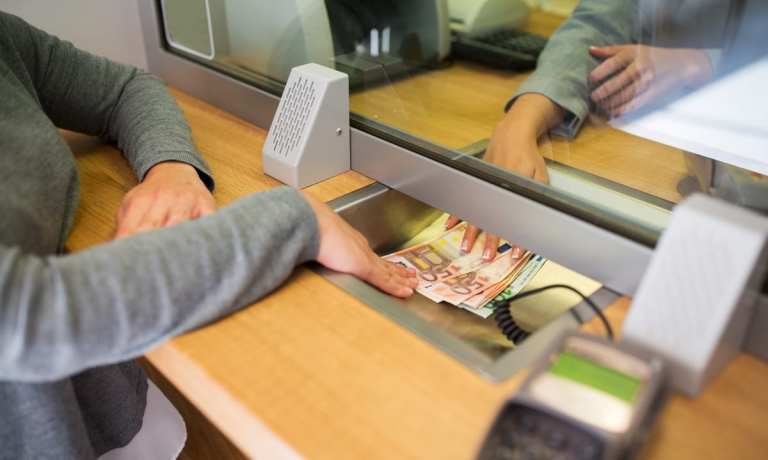
As efforts to innovate payments infrastructure continue, speed remains top priority. But it’s not only consumers driving demand for real time.
In this week’s roundup of payment rail innovation, PYMNTS finds B2B payments use cases serve as an important driver of adoption, with FinTechs and financial service providers embracing payment rails old and new to enable real-time B2B payments and foreign exchange. Plus, blockchain projects move closer to launch in the U.S. and abroad.
Everlink, FINTAINIUM Partner For Real-Time Payments
Everlink Payment Services has its eye on real-time B2B payments with a new partnership with FINTAINIUM, the companies announced this week. FINTAINIUM is combining its Account Receivables and Payables Management Platform with Everlink’s eHUB Digital Payments Platform to support real-time B2B and B2C payments that adhere to ISO 20022 payments messaging standards. Noting the ongoing and accelerating shift to digital, Everlink said it aims to promote payments modernization for large corporates, small businesses and government entities, allowing them to send or request both individual and bulk real-time payments.
OpenPayd Debuts Real-Time FX
Also focused on real-time transacting is OpenPayd, an application programming interface (API) Banking-as-a-Service (BaaS) company that debuted its InstantFX service. The company connects banks to the technology so they can offer instant currency exchange across 18 currencies, with the ability to loop into an array of payment rails including SEPA, SEPA INSTANT, CHAPS, ACH, wire and more around the globe. In a statement, OpenPayd CEO Iana Dimitrova said that the pandemic is “creating opportunity for firms that can offer real-time, frictionless and intuitive payment experiences. Seamless foreign exchange is a big but complex part of that for which many firms still rely on batch processing.” By looping into existing rails, OpenPayd’s technology can support instant settlement for businesses operating in multiple parts of the world.
Smaller FIs Drive Real-Time Demand
Reports in American Banker said more smaller financial institutions (FIs) are choosing not to wait for the Federal Reserve‘s FedNow instant payments network launch, and instead are working with FinTech partners to loop into existing real-time payments capabilities. Smaller banks want to take advantage of this demand and are increasingly looping into The Clearing House‘s RTP network, developed and owned by the largest banks in the country. Citing a June survey by Citizens Financial Group, the publication noted more than 50 percent of businesses are interested in real-time transactions to better manage cash flow, while more than 40 percent said they would use it for accounts payable (AP) or payroll. One FI, First Bank, told the publication why B2B use cases are upping the demand for real time. “Most of our first RTP use cases are companies who want to get payments to workers and suppliers faster,” said First Bank assistant vice president Ajay Kothuri.
B2B Drives ACH Volume Up
The latest figures from the ACH Network show a surge in B2B payments volume on the payment rail, new data from Nacha revealed. According to the latest stats, the ACH Network saw 6.8 billion payments in the year’s third quarter, a 9 percent year-over-year increase. Commercial payments were a particularly bright spot, with B2B payments volume on the network increasing 12.4 percent. According to Nacha, healthcare claim payments were another key factor driving transaction volume up during the third quarter.
Chase Creates New Blockchain Unit
In the latest show of support for distributed ledger technology, J.P. Morgan Chase said it has forged a new blockchain unit to focus on distributed ledger technology (DLT)-related project. It is using its proprietary digital currency, the JPM Coin, to move money across borders commercially for the first time, pointing to an unnamed technology client. As that pilot progresses, J.P. Morgan created its new unit Onyx to further expand on its blockchain ambitions.
The bank’s global head of wholesale payments Takis Georgakopoulos said, “We are launching Onyx because we believe we are shifting to a period of commercialization of those technologies, moving from research and development to something that can become a real business.”
China Touts Proprietary Digital Currency
Governments are also increasingly exploring the potential of blockchain and digital currencies, with China touting its proprietary system DCEP (Digital Currency Electronic Payment). Reports in BBC News said China plans to launch DCEP later this year, although its central bank, the People’s Bank of China, has not established an exact date. One unnamed cryptocurrency expert told the publication that China may be hoping for its digital currency to more aggressively compete with the U.S. and break its “monetary sovereignty.”